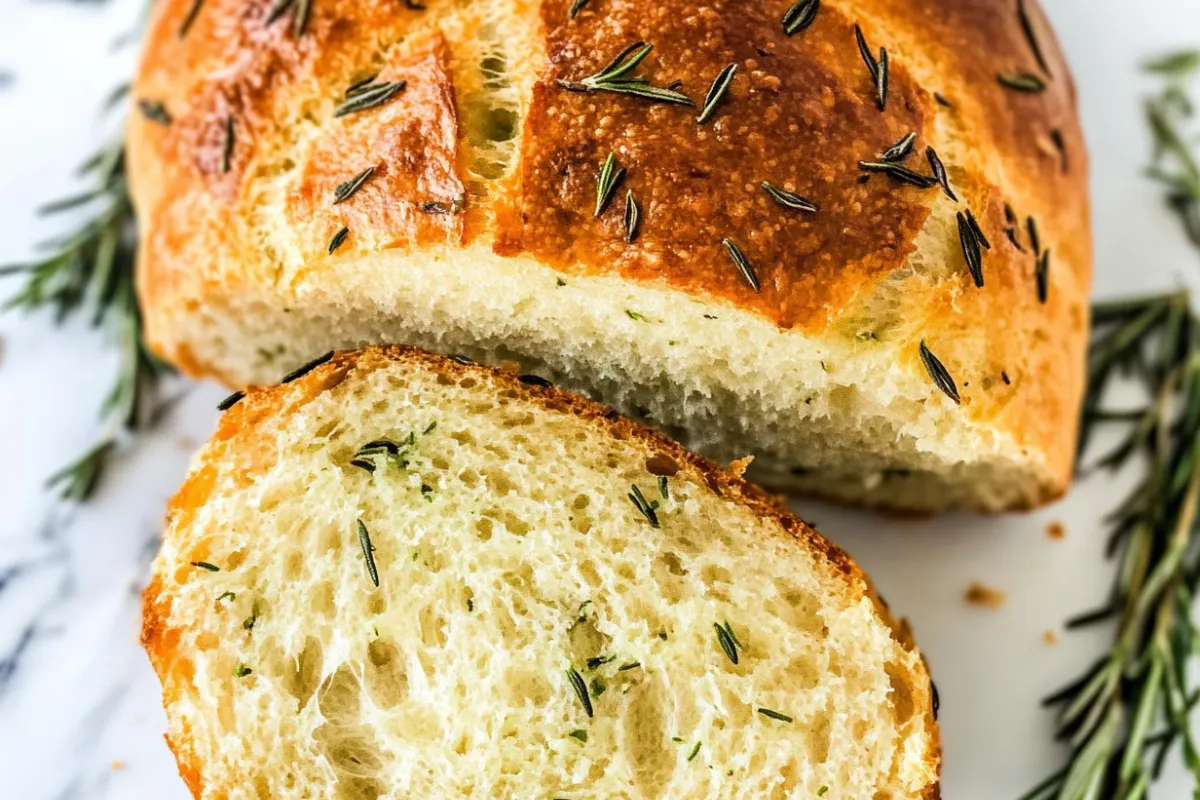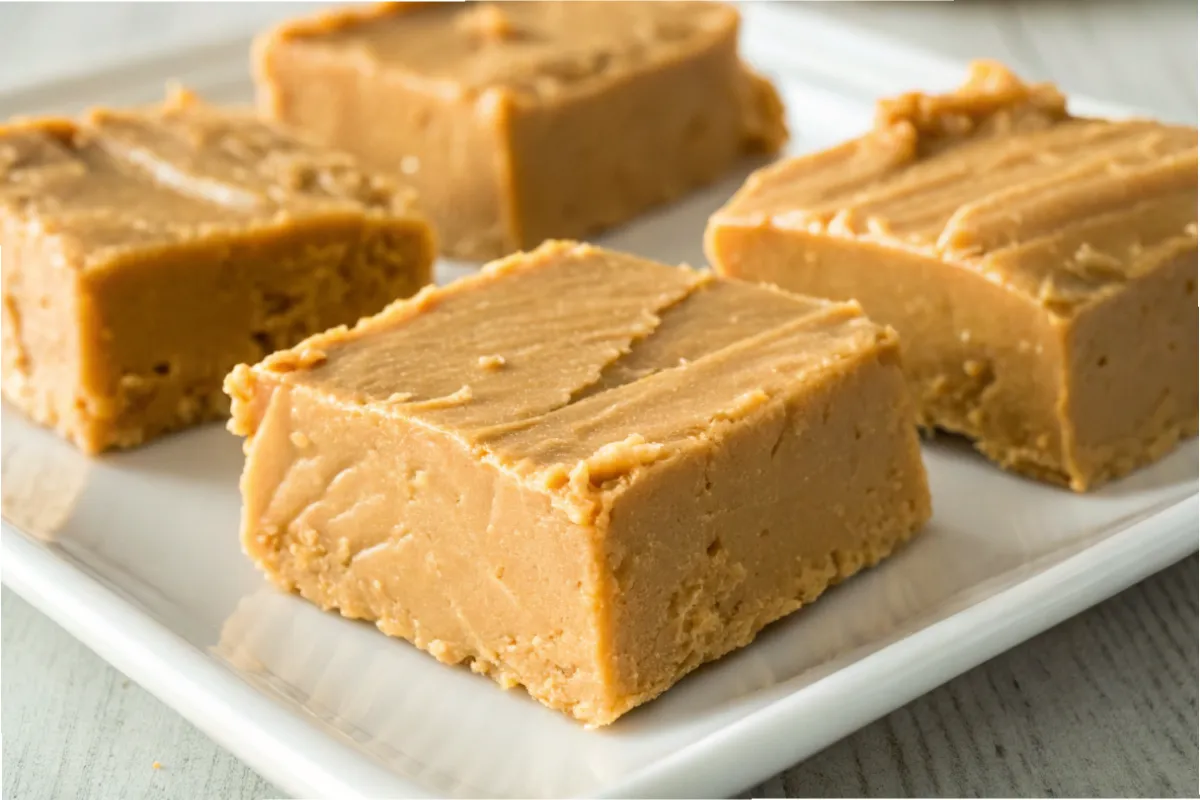I still remember the first time I pulled a loaf of rosemary bread out of the oven, the smell alone could stop time. There’s something deeply comforting about homemade bread, and this rosemary bread recipe takes that comfort to a whole new level. The combination of fresh rosemary, olive oil, and a soft, airy crumb creates a rustic loaf that feels both elevated and approachable.
This recipe is perfect for weekend baking, dinner parties, or simply filling your kitchen with the kind of warm, herby fragrance that makes everyone ask, “What are you baking?” I often serve this with soups or slice it thin for crostini. It also makes an unforgettable grilled cheese sandwich.
Whether you’re new to bread-making or a seasoned home baker, this rosemary bread recipe fits beautifully into your go-to collection. It’s simple enough for beginners yet rich in flavor and texture, making it feel truly special every time.
Table of contents
Why This Rosemary Bread Recipe Works So Well
What makes this rosemary bread recipe such a standout is the balance between a flavorful crust and a pillowy, soft interior. It’s made with pantry staples flour, yeast, water, salt, olive oil, and of course, fresh rosemary but what you get is far more than the sum of its parts.
One of the secrets is using fresh rosemary, finely chopped, which releases its essential oils into the dough during kneading and baking. It perfumes the entire loaf without overpowering. A splash of olive oil in the dough keeps it moist while contributing to that rich, golden crust we all love.
You can also tailor this rosemary bread recipe to your lifestyle or pantry. Want to make it whole grain? Swap in part whole wheat flour. Prefer it gluten free? Use a trusted 1-to-1 gluten free flour blend. Watching your sodium? You can reduce the salt without compromising too much on flavor, especially if you serve it with a salted butter or olive oil dip.
It’s a dough that welcomes variation and forgiving enough for first-time bread bakers. Whether baked free-form on a sheet pan or in a Dutch oven for added steam and rise, the result is always deeply satisfying.
Recipe Card
Little Secrets That Make a Big Difference
- Use fresh rosemary, not dried: The aromatic oils in fresh rosemary infuse the dough beautifully. Dried rosemary can be too harsh and brittle. If you must use dried, reduce the quantity by half and crush it lightly to release more flavor.
- Warm water is your best friend: When proofing your yeast, use water that’s around 100 to 110°F (38 to 43°C). Too cold and your dough won’t rise properly. Too hot and you’ll kill the yeast. If you don’t have a thermometer, the water should feel slightly warm to the touch, not hot.
- Let the dough rest long enough: Be patient with rising times. A slow, steady rise helps develop flavor and texture. If your kitchen is cool, place the bowl in a turned-off oven with the light on for a cozy proofing environment.
- Use a baking stone or Dutch oven for that golden crust: To get that bakery-style crispy crust, use a baking stone or Dutch oven to trap steam. If you’re baking on a sheet pan, place a small tray of water at the bottom of your oven for steam.
- Brush with olive oil before baking: Just before baking, brush the top with olive oil and sprinkle with sea salt. It enhances the crust’s texture and gives the loaf a gorgeous golden finish.
Tasty Twists on the Classic Rosemary Bread Recipe
1. Garlic Rosemary Bread
If you’re a garlic lover (and honestly, who isn’t?), this twist is a must-try. Simply mince 2 to 3 garlic cloves and mix them into the dough with the chopped rosemary. The result is a savory loaf that pairs beautifully with soups, pasta dishes, or as the star in a gourmet grilled cheese. You can also roast the garlic beforehand for a sweeter, mellower flavor.
2. Rosemary Olive Bread
Add chopped kalamata or green olives for a Mediterranean feel. This version is bursting with briny depth and works well as part of a charcuterie board or alongside a hearty stew. Use about half a cup of well-drained olives and fold them into the dough during the first kneading.
3. Whole Wheat Rosemary Bread
For a slightly nutty flavor and a boost in fiber, substitute half the all-purpose flour with whole wheat flour. You may need to add a bit more water since whole wheat absorbs more moisture, but the end result is a wholesome, hearty loaf that still keeps that lovely rosemary aroma.
4. Cheesy Rosemary Bread
Shredded cheddar, parmesan, or asiago cheese pairs beautifully with rosemary. Add half a cup to the dough or sprinkle cheese on top before baking for a crusty, golden finish. This version makes an excellent side for tomato-based dishes or creamy casseroles.
FAQs
Yes, you can substitute dried rosemary, but use about half the amount as it’s more concentrated.
This bread pairs wonderfully with olive oil for dipping, soups, stews, or as a sandwich base.
Yes, substitute the all-purpose flour with a gluten-free baking blend, but the texture might vary slightly.
Store in an airtight container at room temperature for up to 3 days or freeze for up to a month.
A Final Slice
There’s just something magical about the scent of rosemary wafting through the kitchen while a fresh loaf bakes in the oven. Whether you’re serving it with a hearty stew, making an impressive sandwich, or simply enjoying a warm slice with olive oil, this rosemary bread recipe brings rustic, homemade charm to any table.
Its flexibility means you’ll never get bored, from garlic and olives to whole wheat and honey-sweetened twists, there’s always room to experiment. Plus, the process of baking bread from scratch is grounding and surprisingly simple once you get the hang of it.
For more flavorful bread ideas, try our Spinach Garlic Stuffed Flatbread Recipe for a delicious herbed twist.











Leave a Reply